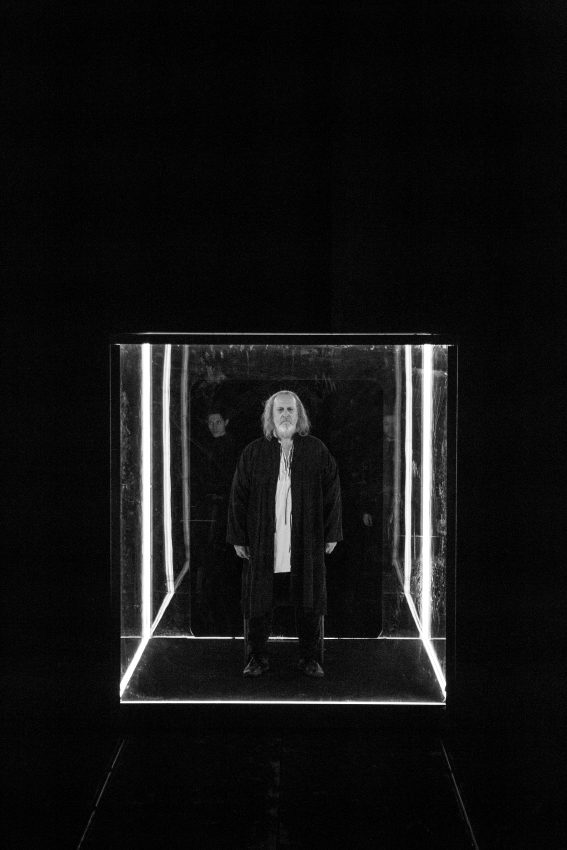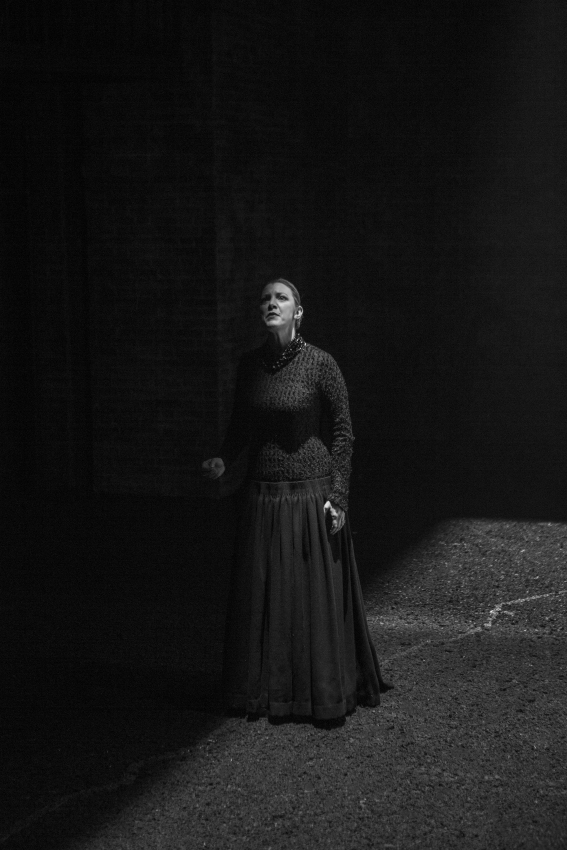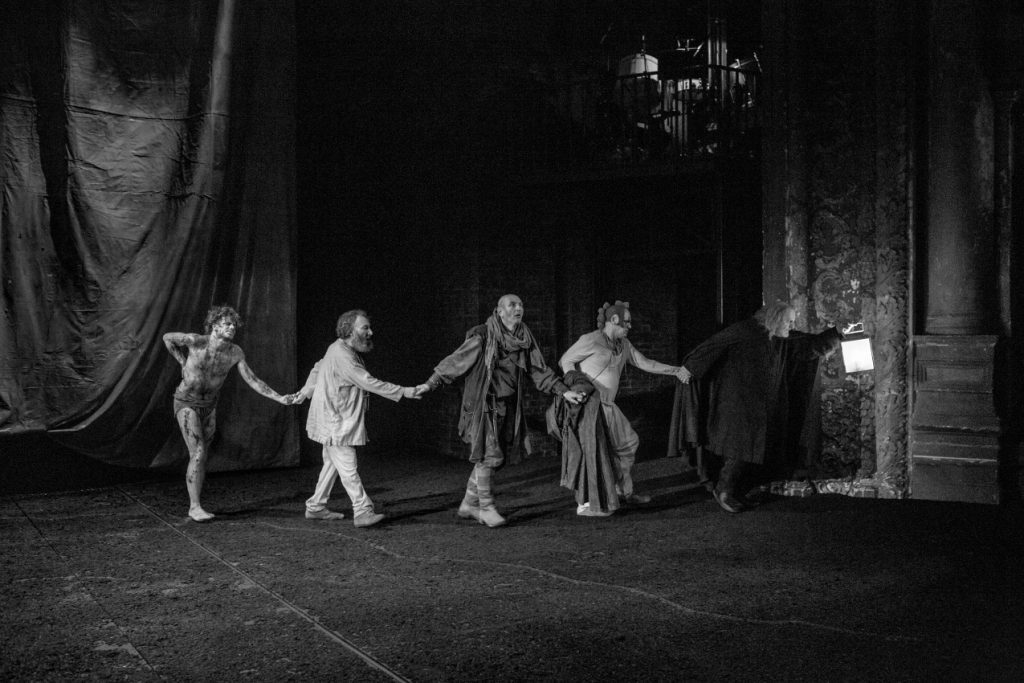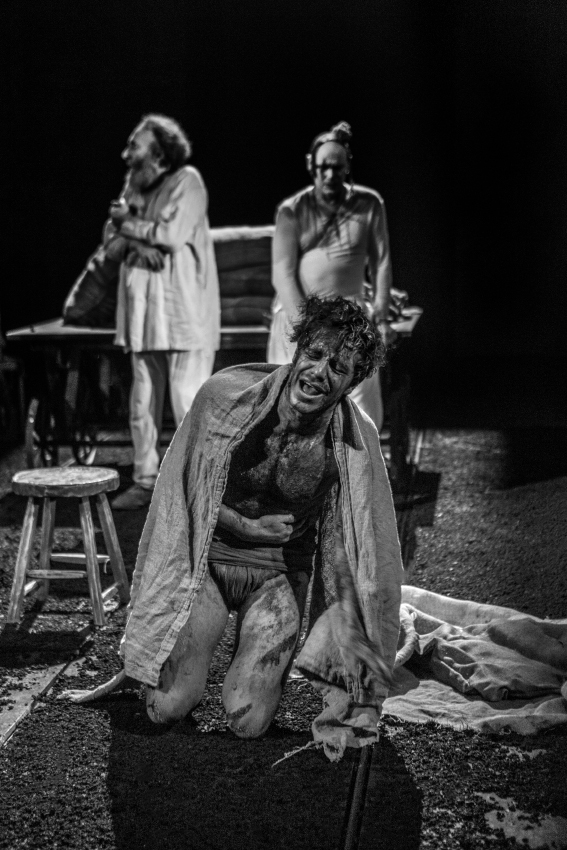King Lear at BAM

PHOTOGRAPHY BY: Zach Gross
At the start of the Brooklyn Academy of Music’s latest iteration of William Shakespeare’s King Lear (dir. Gregory Doran), our titular character is brought out onstage, not only on the backs of his servants but also surrounded in a hollow cube. This cube, which is both a manifestation of his vanity and a metaphor for his disconnect with reality, is then reused twice more during the Royal Shakespeare Company’s (King and Country: Shakespeare’s Great Cycle of Kings, 2016 Winter/Spring) production of Lear, each time to amazing effect. But what really stands out are the iconic performances by the cast and what can be considered some interesting interpretations of the various settings within Shakespeare’s “play of madness” created by set designer Niki Turner.
Heading this cast is, of course, Sir Antony Sher as Lear. Of the past three productions of Lear at BAM, I can’t recall any actor who has played him so bombastically and so unabashedly in-tune with his on gravitas. Lear is a physically demanding role and Sher does not show an ounce of give. Especially noteworthy are Lear’s evocations upon those who do him harm. Sher’s stance during these pontificated curses, cued by the churning of Jonathan Ruddick’s sound design as well as Ilona Sekacz music production, turns the entire stage into a rich painting where all eyes are turned to Lear as if he were the play’s vanishing point. There are only two sides to Lear throughout the play: the fire-breathing ego trip or the maddened old man at wit’s end. Sher throws himself into both so that the audience can properly transition from disdain to pity by the final act.


The cast of characters which surround Lear is also expertly handled. Nia Gwynne and Kelly Williams as Lear’s vulture-like daughters, Goneril and Regan (respectively), both lend credence to the threat they pose from the first act. Clarence Smith as Albany and James Clyde as Cornwall are both at the mercy of these two women’s schemes and yet provide a few flashes of their true characters during pivotal scenes. Other standouts are Graham Turner as Lear’s Fool which, in my opinion, has been hit-or-miss in earlier productions at BAM. The Fool holds so much power over Lear and provides much-needed commentary, and not to mention heart, for the ruler who spends the first part of the play dressed in furs and gold. Turner provides much of the levity needed with frequent winks of acknowledgment to the audience. Mimi Ndiweni’s Cordelia, Lear’s youngest daughter, is also properly realized. For such a pivotal character, Cordelia has very few scenes in the play. Ndiweni brings warmth to her character, even when she is dressed for war. All-in-all, a well-balanced cast throughout.
While I would also like to say that Kent, played amazingly by Antony Byrne, was my personal standout from the main story cast, I found the decision to dress him in rags and give him tattoos somewhat distracting. In the play, the banished Kent is reinvigorated when he disguises himself as the truth-hurling Caius. But what is supposed to be a vagrant scrapper comes across looking like an extra from Mad Max. While Byrne is superb in the role and does so much to show to what extremes his loyalty to Lear would go, I would have liked a better choice for his costume design (a minor flub that I found in Turner’s selections).
What makes King Lear one of my favorite plays can also be its downfall. Lear is the only one of Shakespeare’s tragedies to feature a subplot, and this can very well muddle an already convoluted narrative if those parts are not in good hands. Luckily, while Lear deals with his deceitful daughters, David Throughton as the Earl of Gloucester and Oliver Johnstone as his son Edgar both work diligently to portray the strife that has befallen their own lineage. There to crumble their family’s foundation is Edmund. As Iago is to Othello, Edmund is the antagonist who seeks to bring down the mighty using nothing but his words. Paapa Essiedu is brilliant in this role. His canter and poise shapeshift between the various situations that pose themselves, and his second act soliloquy is still my favorite of the entire play.


Lear is not without a few troubles. As I said, the play itself has its fair share of problems. While I felt that this production was well cast and properly produced, Lear as a whole can offer some difficulties; a few that I feel were not addressed. For one, Lear is challenging. The amount of disguises and leaps in time tends to lose the uninitiated. It is such a play of language that characters like the Fool or Edgar’s “Poor Tom” persona seem to wander and ramble to deflect their true meanings if you don’t listen close enough. While this serves the purpose of the play, some audience members exclaimed after the show that while they struggled with lines, they also found it hard to hear some of the lines. I will admit that there were a few times, especially when the actors walked to the back-third of the stage, that a few lines seemed to drop from being audibly clear.


Lastly, I was truly chomping at the bit to see another production of Lear at BAM. I’ve seen three already and the play remains one of my absolute favorites of Shakespeare. This time around, I found that there is something so relevant (and familiar) behind the premise of an egotistical and narrow-minded ruler going mad due to his demands for praise not being met. I was waiting for some acknowledgment of this throughout the play and surprisingly, it came towards the second half. The line itself (one which I will not spoil) incited laughter, followed by a rousing ovation from the crowd; something that really brought the relevance of this play home for me.
King Lear at BAM is another rousing success in the Royal Shakespeare Company line. While some shortcomings exist, the cast– headlined by Sir Antony Sher’s performance as Lear– solidifies this as a production that needs to be seen.
You might also like 


























